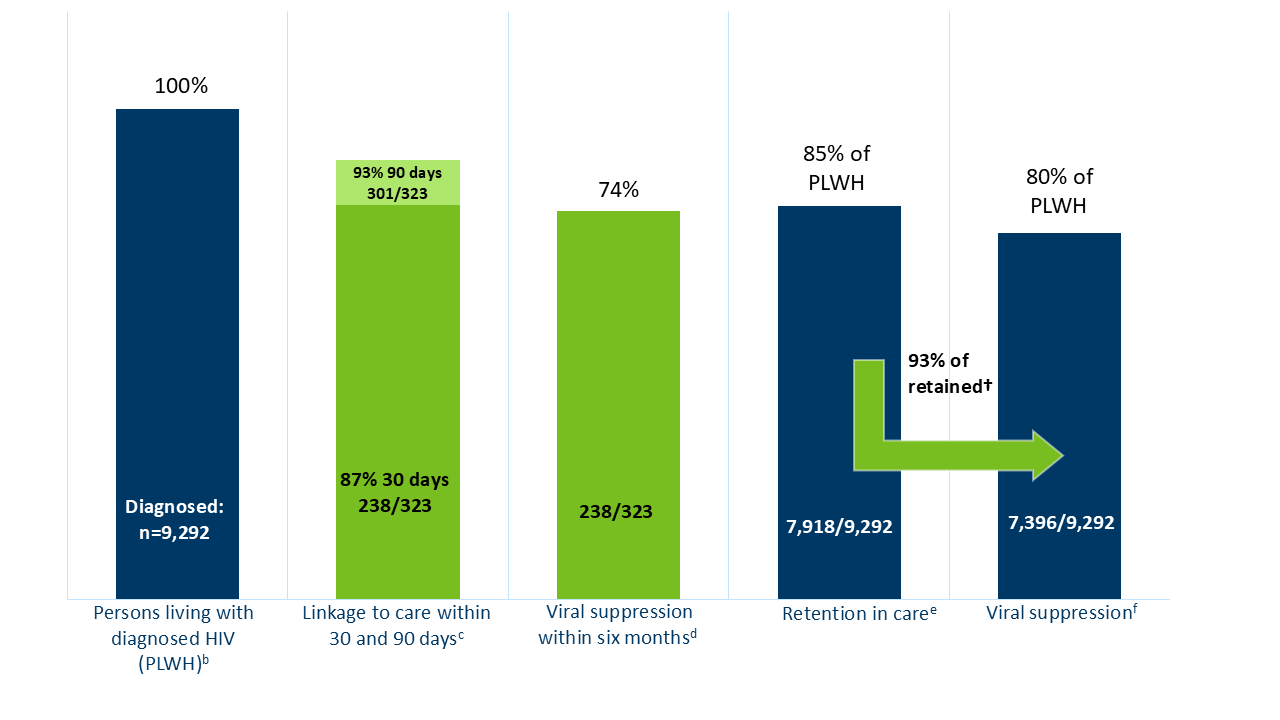Contact Info
HIV Care Continuum
The care continuum, sometimes referred to as treatment cascade, is a calculation of how many Minnesotans diagnosed with HIV are initially linked to care, retained in care (receiving HIV medical care in 2024), and achieved viral suppression. It is an important tool in measuring the successes of the National HIV/AIDS Strategy in Minnesota.
Health care providers in Minnesota typically only do one lab test per year for patients whose HIV infection is well managed. We are able to get a better sense of HIV care in Minnesota using one lab test for the "retention in care" data point, instead of two lab tests that the CDC usually publishes in their care continuum.
It's important to remember that this data is a point in time and not cumulative. It is a snapshot of how HIV positive peoples' clinical care occurred in a given year by their final reported lab value for the year. We have been calculating the care continuum since 2013.
The goal of HIV treatment is to achieve viral suppression, meaning the amount of HIV in the body is very low or undetectable. This is important for people living with HIV to stay healthy and live longer. We also know that people living with HIV who get and stay virally suppressed can't pass HIV to their sex partners. Learn more at Undetectable = Untransmittable (U=U).
Percentages of people with HIV engaged in selected stages of the continuum of care, 2024
- Download Percentages of People with HIV Engaged in Selected Stages of the Care Continuum, 2024 (PDF)
- Download Demographic Breakdowns of the HIV Care Continuum in Minnesota, 2024 (PDF)

bDefined as persons diagnosed aged 13 or more with HIV infection (regardless of stage at diagnosis) through year-end 2023, who were alive at year-end 2024.
cCalculated as the percentage of persons linked to care within 30 and 90 days after initial HIV diagnosis during 2023. Linkage to care is based on the number of persons diagnosed during 2023 and is therefore shown in a different color than the other bars with a different denominator.
dCalculated as the percentage of person who had an initial HIV diagnosis during 2023 that were virally suppressed VL (≤200 copies/mL) within six months of HIV diagnosed. This is shown in a different color than the other bars with a different denominator.
eCalculated as the percentage of persons who had ≥ one CD4 or viral load test results during 2024 among those diagnosed with HIV through year-end 2023 and alive at year end 2024.
fCalculated as the percentage of persons who had suppressed viral load (≤200 copies/mL) at most recent test during 2024, among those diagnosed with HIV through year-end 2023 and alive at year-end 2024.
†Calculated as number of persons who had suppressed VL (≤200 copies/mL) at most recent test during 2024, among those who were retained in care during 2024 (7,396/7,918).
Additional Resources
- For information on the CDC's national care continuum, see Understanding the HIV Care Continuum (PDF)